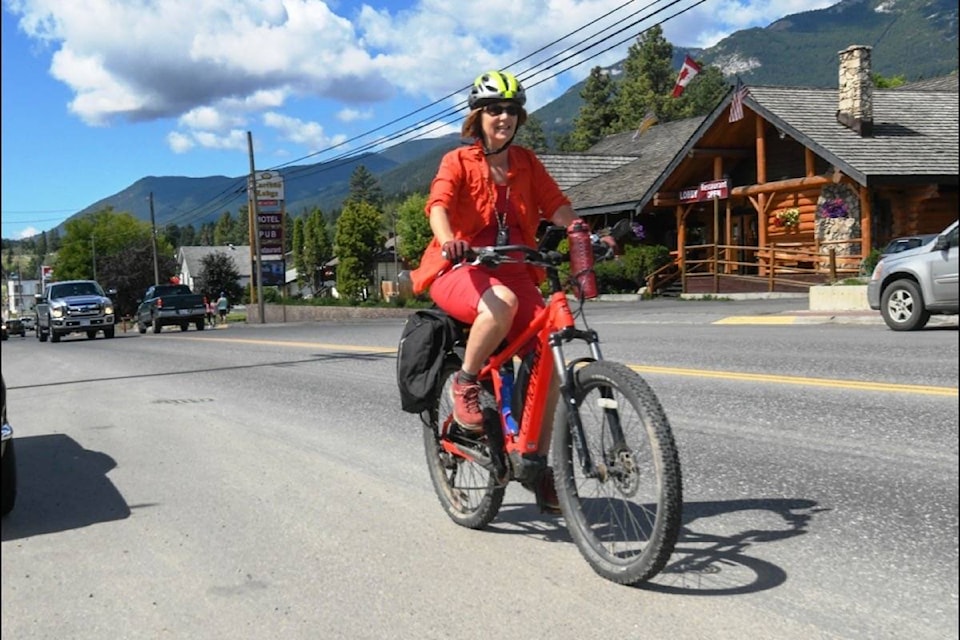The New Pathways to Gold Society plans to make parts of the historic Cariboo Waggon Road more accessible to hikers, bikers, and other non-motorized activities, using recent grant funding of $100,000.
The work, which will take place north of Clinton, is part of phase two of the Cariboo Waggon Road Restoration Project, which began in 2019 when the society received funding to identify and survey sections of the historic road between Clinton and Lac La Hache.
While much of the road has been paved over and still carries traffic, there are many relatively untouched sections, and NPTGS has identified 11 sections that can be fairly easily restored for non-motorized traffic.
“What we’re focusing on is people who hike and bike and ride horses,” says Don Hauka, creative/communications director for NPTGS. “There are sections that have big chunks of working road, and we’re not trying to ban motorized traffic; we’re encouraging folks to use sections we’ve worked on and surveyed in a non-motorized manner.
“In some places, the road is in remarkable shape and still used, which is a testament to the Royal Engineers who built the road and to the local folks who kept it in shape when it was the only road in town.”
The $100,000 comes from three tourism organizations — Thompson Okanagan, Cariboo Chilcotin Coast, and Vancouver and Mountains — via the Province’s Targeted Regional Tourism Development Initiative. Hauka said the broad support indicates the Cariboo Waggon Road is a regional initiative that affects the entire Gold Rush Trail/Spirit Trails corridor from Hope and Lillooet to Barkerville. However, while Hauka said they appreciate the funding, the challenge is prioritizing the spending.
“Covering all 11 sections that we’ve identified will cost $400,000, so we’re still looking for that other $300,000.” He adds that they’re not just looking for government funding; corporate funding could also help support the project, given the number of corporations and industries that work in the corridor.
“Right now it’s a matter of prioritizing the sections we can afford to do in this budget.”
One section that has been prioritized for restoration is in and around Clinton. “The Cariboo Waggon Road is pretty much the downtown drag of Clinton, and we’re looking at the sections leading to and from it. What we’ve proposed is to put some interpretive signage and kiosks up, to let people know when they’re walking downtown that they’re following in the footsteps of the Cariboo Waggon Road.
READ MORE: Cariboo Waggon Road mapped out
“We also want to do a little bit of trail restoration at the north end of town where it veers out and goes to the 51 Mile area. A couple of suburban roads are part of the route leading to the main drag, so we’d like to see some interpretive signage and at least one kiosk, and restore 1.5 to 2.5 kilometres of actual road.”
Hauka said they will also look at safety, such as whether the shoulders of existing roads on the Clinton to 51 Mile section can be widened. “The great thing is to get the experience of walking through time, which is quite varied.
“You can walk through the downtown of Clinton, so it’s contemporary, but you’re following in the footsteps of the people who made that community.
“It’s also the traditional territory of Indigenous people, who used it as a trade route, and it’s not just the Gold Rush route but also the fur trade route, and it’s still a working road. There are layers of history.”
With work completed on the Clinton to Lac La Hache section of the road, Hauka says the society is looking down the road to phase three, which will survey the section from 127 Mile to Barkerville.
“That would more or less complete the last chunk in the north, and we’re pretty much finished from Lillooet to Clinton, so Yale to Clinton would connect all the dots.”
The problem with the Fraser Canyon section, he says, is the original road has been quite fragmented by the CP and CN railway lines through the area. “The most intact chunks are in some of the provincial parks.”
In the meantime, New Pathways to Gold will be working with project partners on the timeline for work north of Clinton.
“We want to put in some kiosks and signage and restrooms, interpretive signage, picnic tables. We’ve worked with the communities in Clinton, 100 Mile, and 108 Mile to identify what they thought should be there, what people who use it would need. We want a feel of what people are there for.
“We have a bike repair station planned for 70 Mile because that’s what people are looking for. If you’re coming up here from Vancouver, you want to know there’s somewhere to fix your bike if something goes wrong.”
Hauka says they hope to start work this summer.
“Work could easily go into the fall depending on the pandemic situation, but we’re fairly confident we can find a way to get moving on this and start to develop a plan that will see some work done all the way from Clinton to Lac La Hache.”
newsroom@100milefreepress.net
Like us on Facebook and follow us on Twitter.
